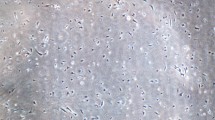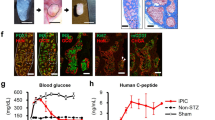Abstract
Enteroendocrine cells are the largest population of hormone-producing cells in the body and play important roles in many aspects of body functions. The enteroendocrine cell population is divided into different subpopulations that secrete different hormones and peptides. Characterization of each subpopulation is particularly useful for analyzing the cellular mechanisms responsible for specific cell types. Therefore, the necessity of a pure cell line for a specific study purpose was the important motivation for the separation of cell lines for each subpopulation of enteroendocrine cells. The present research introduces a method for the isolation of L-cells, one of the important subpopulations of enteroendocrine cells. The antibiotic selection method was conducted in order to isolate the L-cells from a heterogonous population of intestinal cell line. In this method, a neomycin resistance gene (as selected marker) was expressed under the control of a specific promoter of L-cells. After transfection of manipulated plasmid, only the cells which determine the specific promoter and express neomycin resistance protein would be able to survive under Geneticin antibiotic treatment condition. In order to confirm that the isolated cells were L-cells, reverse transcriptase polymerase chain reaction (PCR) and quantitative PCR assays were performed. Based on the results, the isolated cells were pure L-cells that could be able to express specific mRNA of L-cells efficiently. This technique provides a unique method for the isolation and purification of any cell line. The purified isolated L-cells by this method can be used for future studies and for analyzing cellular mechanisms that involve L-cells' functions.



Similar content being viewed by others
References
Stachura, J., Krause, W. J., & Ivey, K. J. (1981). Ultrastructure of endocrine-like cells in lamina propria of human gastric mucosa. Gut, 22, 534–541.
Theodorakis, M. J., Carlson, O., Michopoulos, S., Doyle, M. E., Juhaszova, M., Petraki, K., & Egan, J. M. (2006). Human duodenal enteroendocrine cells: source of both incretin peptides, GLP-1 and GIP. American journal of Physiology - Endocrinology and Metabolism , 290, E550–E559.
Girard, J. (2008). The incretins: from the concept to their use in the treatment of type 2 diabetes. Part A: incretins: concept and physiological functions. Diabetes & metabolism, 34, 550–559.
Schonhoff, S. E., Giel-Moloney, M., & Leiter, A. B. (2004). Minireview: development and differentiation of gut endocrine cells. Endocrinology, 145, 2639–2644.
Martin, G. R., Beck, P. L., & Sigalet, D. L. (2006). Gut hormones, and short bowel syndrome: the enigmatic role of glucagon-like peptide-2 in the regulation of intestinal adaptation. World Journal of Gastroenterology, 12, 4117–4129.
McDermott, J. R., Leslie, F. C., D'Amato, M., Thompson, D. G., Grencis, R. K., & McLaughlin, J. T. (2006). Immune control of food intake: enteroendocrine cells are regulated by CD4+ T lymphocytes during small intestinal inflammation. Gut, 55, 492–497.
Moran, G. W., Leslie, F. C., Levison, S. E., Worthington, J., & McLaughlin, J. T. (2008). Enteroendocrine cells: neglected players in gastrointestinal disorders? Therapeutic Advances in Gastroenterology, 1, 51–60.
Burcelin, R. (2005). The incretins: a link between nutrients and well-being. The British Journal of Nutrition, 93(Suppl 1), S147–S156.
During, M. J., Cao, L., Zuzga, D. S., Francis, J. S., Fitzsimons, H. L., Jiao, X., Bland, R. J., Klugmann, M., Banks, W. A., Drucker, D. J., et al. (2003). Glucagon-like peptide-1 receptor is involved in learning and neuroprotection. Nature Medicine, 9, 1173–1179.
Mattson, M. P., Perry, T., & Greig, N. H. (2003). Learning from the gut. Nature Medicine, 9, 1113–1115.
Rasouli, M., Ahmad, Z., Omar, A. R., & Allaudin, Z. N. (2011). Engineering an L-cell line that expresses insulin under the control of the glucagon-like peptide-1 promoter for diabetes treatment. BMC Biotechnology, 11, 99.
Cheung, A. T., Dayanandan, B., Lewis, J. T., Korbutt, G. S., Rajotte, R. V., Bryer-Ash, M., Boylan, M. O., Wolfe, M. M., & Kieffer, T. J. (2000). Glucose-dependent insulin release from genetically engineered K cells. Science, 290, 1959–1962.
Vilsboll, T., Krarup, T., Madsbad, S., & Holst, J. J. (2003). Both GLP-1 and GIP are insulinotropic at basal and postprandial glucose levels and contribute nearly equally to the incretin effect of a meal in healthy subjects. Regulatory Peptides, 114, 115–121.
Seidah, N. G., Chretien, M., & Day, R. (1994). The family of subtilisin/kexin like pro-protein and pro-hormone convertases: divergent or shared functions. Biochimie, 76, 197–209.
Lynch, D. R., Strittmatter, S. M., Venable, J. C., & Snyder, S. H. (1987). Enkephalin convertase in the gastrointestinal tract an associated organs characterized and localized with [3H]guanidinoethylmercaptosuccinic acid. Endocrinology, 121, 116–126.
Ramshur, E. B., Rull, T. R., & Wice, B. M. (2002). Novel insulin/GIP co-producing cell lines provide unexpected insights into gut K-cell function in vivo. Journal of Cellular Physiology, 192, 339–350.
Rindi, G., Grant, S. G., Yiangou, Y., Ghatei, M. A., Bloom, S. R., Bautch, V. L., Solcia, E., & Polak, J. M. (1990). Development of neuroendocrine tumors in the gastrointestinal tract of transgenic mice. Heterogeneity of hormone expression. The American Journal of Pathology, 136, 1349–1363.
Wice, B. M., & Gordon, J. I. (1995). A tetraspan membrane glycoprotein produced in the human intestinal epithelium and liver that can regulate cell density-dependent proliferation. The Journal of Biological Chemistry, 270, 21907–21918.
Drucker, D. J., Jin, T., Asa, S. L., Young, T. A., & Brubaker, P. L. (1994). Activation of proglucagon gene transcription by protein kinase-A in a novel mouse enteroendocrine cell line. Molecular Endocrinology, 8, 1646–1655.
Gosmain, Y., Avril, I., Mamin, A., & Philippe, J. (2007). Pax-6 and c-Maf functionally interact with the alpha-cell-specific DNA element G1 in vivo to promote glucagon gene expression. The Journal of Biological Chemistry, 282, 35024–35034.
Amos, P. J., Cagavi Bozkulak, E., & Qyang, Y. (2012). Methods of cell purification: a critical juncture for laboratory research and translational science. Cells, Tissues, Organs, 195, 26–40.
Acknowledgments
This project was supported by the E-Science Fund from the Ministry of Science, Technology and Innovation, Malaysia under award number 02-01-04-SF1056. We would like to thank Prof. Douglas Hanahan from the Department of Biochemistry and Biophysics, University of California San Francisco, USA for providing us the STC-1 cell line and also Dr. Yvan Gosmain from the Diabetes Unit, University Hospital, University of Geneva Medical School, Geneva, Switzerland for providing us the Glu.BS plasmid. We also would like to thank Dr. Tan Sheau Wei from the Laboratory of Vaccines and Immunotherapeutics, Universiti Putra Malaysia for assisting us in the real-time PCR work.
Author information
Authors and Affiliations
Corresponding author
Rights and permissions
About this article
Cite this article
Rasouli, M., Abbasi, S., Sarsaifi, K. et al. The L-Cell Isolation from Heterogonous Population of Intestinal Cell Line Using Antibiotic Selection Method. Appl Biochem Biotechnol 172, 394–404 (2014). https://doi.org/10.1007/s12010-013-0514-6
Received:
Accepted:
Published:
Issue Date:
DOI: https://doi.org/10.1007/s12010-013-0514-6




